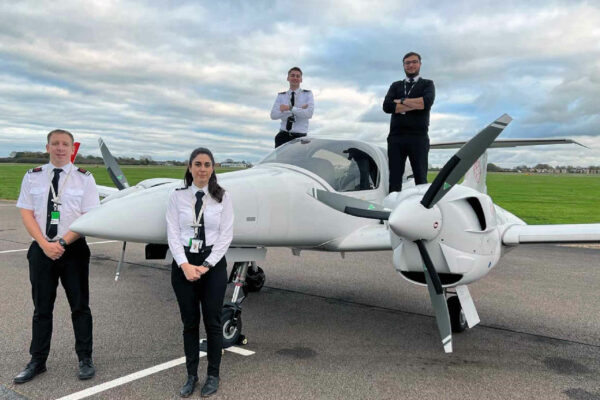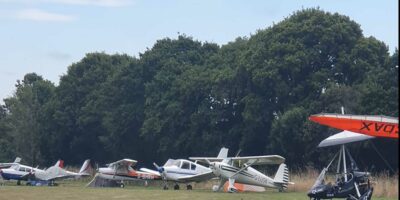It is relatively quiet on the regulatory news front, so this month I felt like picking a subject that while not new, can seem confusing to the uninitiated. The recent publication of the CAA’s Airworthiness Code, a Maintenance Guide for Light Aircraft, seemed like an obvious segue into the subject of continuing airworthiness.
The Airworthiness Code is primarily a guide to the Part-ML regulation, but for someone approaching the airworthiness regulatory framework for the first time, it is a pretty good start. Without going into too much detail, I will touch on some subjects covered.
It seems hard to believe that it is nearly 20 years since the EASA regulations for continuing airworthiness and maintenance started to emerge. If memory serves me, it was 2006 when Part-M first arrived for GA.
The regulatory framework and requirements have changed a few times since then and are currently contained within the Continuing Airworthiness Regulation, Regulation (EU) 1321/2014, with both EASA and UK versions remaining similar.
Management and maintenance
An early change brought by EASA was a more formal distinction between ‘continuing airworthiness’ and maintenance. Continuing airworthiness being the concept of managing the various procedures and actions required to keep an aircraft airworthy, and maintenance being the physical work performed. The ‘continuing airworthiness management organisation’ (CAMO) and maintenance requirements distinguished between organisations that were approved to manage airworthiness and those that could conduct maintenance activity.
In a GA context the distinction was often artificial. Prior to CAMOs existing in a formal sense, typical GA maintenance organisations often acted in a similar capacity anyway – in co-operation with owners and operators, the required maintenance activities were usually planned and executed.
However, when Part-M arrived, even though it was not a requirement for non-commercial aircraft to be subject to a CAMO contract, many owners and operators used a CAMO because without one, they would effectively have to plan and contract all required maintenance activity or inspections.
Many GA maintenance organisations also went for the CAMO approval, since without it they were not able to take any initiative or responsibility for making airworthiness decisions.
The 2019 reorganisation of the Continuing Airworthiness Regulation introduced the ‘Combined Airworthiness Organisation’ (CAO) approval under Part-CAO, which included both continuing airworthiness management and maintenance privileges for light aircraft. The ‘CAMO’ approval continued as a standalone management approval that was more applicable to larger aircraft.
In more common parlance, people often refer to both CAO and CAMO approved organisations as being ‘a CAMO’ – both have management privileges but with a different scope of aircraft.
The AMP and the MIP
Part-ML came in alongside Part-CAO and set out the framework of maintenance requirements for most Part 21 light aeroplanes up to an MTOW of 2,730kg, when not listed on the AOC of a licensed air carrier. Under Part-ML, all aircraft must have an Aircraft Maintenance Programme (AMP). The AMP is normally in accordance with a template that is available on the CAA website, but other formats could be used if preferred. The AMP contents must be based on either the ‘Minimum Inspection Programme’ (MIP) or the design approval holder (normally the manufacturer) instructions for continuing airworthiness (ICA).
The MIP is essentially a list of minimum inspections and tasks which must be completed – for example, it includes the requirement for aircraft to have a 100 hour or Annual Inspection. Some of the MIP is in regulation and some is Acceptable Means of Compliance (AMC).
An AMP does not have to follow the MIP or the ICA exactly, but the contents should use one or the other as a starting point and be modified to suit the individual aircraft. If the ICA is being followed without deviation, there is no need for a separate AMP document, but this would be unusual for aeroplanes.
Although the MIP does potentially allow considerable deviation from manufacturer ICA, items identified in the aircraft’s ICA as mandatory must be incorporated in the AMP and other items mandated by the CAA (such as Airworthiness Directives) must also be included.
Approval of the AMP
Originally it was a requirement under EASA Part-M for all AMPs to be approved by the competent authority (i.e. the CAA in the UK context) or by a CAMO. For light aircraft the UK arrangement was that the CAA ‘Light Aircraft Maintenance Programme’ (LAMP) template was considered by the CAA to be an ‘approved’ programme, assuming it was customised to the aircraft. Before Part-ML came in, EASA had questioned this arrangement with LAMP, since it was ‘approval’ in a rather loose sense.
There was a transition period between around 2016 and 2019 when Part-M was amended to allow ‘owner declared’ maintenance programmes for non-commercial operations, but before Part-ML and the reorganisation of the associated annexes in the Continuing Airworthiness Regulation.
During this period the terminology changed a bit – originally an owner declared AMP was known as the ‘Self-Declared Maintenance Programme’ (SDMP), but under Part-ML the term has been standardised as simply ‘AMP’.
If an aircraft is only used for non-commercial operations, the AMP may be declared by the owner – the owner writes up the AMP and then signs it to say they take responsibility for the contents.
If the aircraft is used for commercial operations (for example in a flying school), the contracted CAMO or CAO must approve the AMP. Note that this does not inherently mean the requirements for commercial operations are stricter – deviations can still be made from the aircraft’s ICA, except that the CAMO must record justifications for them.
Regardless of whether the AMP is approved by a CAMO or declared by the owner, the MIP remains the minimum standard.
Responsibilities
A key feature of Part-ML is that someone must take overall responsibility for the airworthiness of the aircraft – normally this is either the owner or a CAO or CAMO contracted by the owner. If the aircraft is used for commercial operations, there must be a management contract in place, and this contract must be between the operator and the CAO or CAMO.
It is worth noting that even when a contract is in place, Part-ML does place some responsibilities on the owner or operator, such as having a general understanding of the AMP, maintaining utilisation records and presenting the aircraft for maintenance when the AMP requires it.
The Airworthiness Review
Part-ML retains the annual ‘Airworthiness Review’ and ‘Airworthiness Review Certificate’ (ARC) introduced with Part-M. The Airworthiness Review is an overall check of the aircraft’s airworthiness status and configuration, checking that all required airworthiness actions have been carried out and that the aircraft’s actual condition matches that indicated in the paperwork.
It is possible for the review personnel to identify deficiencies in the AMP and require that the programme is amended. Although sometimes conducted at the same time as the Annual Inspection, the Airworthiness Review is a distinct concept in regulatory terms.
Maintenance privileges
Part-ML requires that an approved maintenance organisation is employed when work is carried out on aircraft used for commercial operations. Note that whoever is physically working on the aircraft, the person responsible for the overall airworthiness of the aircraft remains the same – i.e. the owner or CAMO. The individual or organisation carrying out the maintenance task is only responsible for carrying out the contracted work correctly.
For private aircraft independent engineers may be used, often referred to as ‘Independent Certifying Staff’ (ICS). Under Part-ML it is also possible for specifically authorised ICS to conduct an Airworthiness Review and issue the ARC certificate.
Pilot-owner maintenance is also addressed – Part-ML Appendix II contains a list of suggested items that may be conducted by a competent pilot-owner, and Appendix III contains the list of prohibited items. Note that the pilot-owner must sign the certificate of release to service (CRS) themselves when carrying out maintenance activity.
Depending on the policy of the organisation or ICS, it is possible for pilot-owners to complete more complex tasks under the supervision of qualified staff, but the qualified staff must sign the CRS on completion.
More info:
www.caa.co.uk/airworthinesscode
CAA Part-ML guidance







